These stars' points are made of pairs of diamonds that create chevron shapes. Almost always, the diamonds have angles of 30 and 60 degrees.
 Doe & Darts  Doe & Darts  Sandhills Star  Modern Star  Star of Many Points  Merry Kite  Wedding Bouquet
 Wyoming ValleyTotal War, 1778: Wyoming ValleyTotal War, 1778:
A massacre, a poem, and a brand new state |
|
|
Doe & Darts

 Doe & Darts
Finley Doe & Darts
Finley
1929
While Doe & Darts is the name most familiar to quilters nowadays, it was the last on Ruth Finley's list for this block in her 1929 book Old Patchwork Quilts. Her preferred name was David & Goliath. We understand that Nancy Cabot also called it Bull's Eye in the Chicago Tribune in 1933.
Doe & Dart patterns on the Web are drawn on a 10x10 grid, but the proportions of Doe & Darts actually vary depending on who drafts it. Further, most Web patterns inaccurately credit the block to Finley.
Our lavender "Make It!" icon links to our diagram of Finley's block. |
|
Doe & Darts
 Doe & Darts
Web, unattributed Doe & Darts
Web, unattributed David & Goliath/Katie's Favorite David & Goliath/Katie's Favorite
Although it has been attributed to Finley, this version of Doe & Darts got its name elsewhere. It seems to be the only version of Doe & Darts on the Web.
Often, Doe & Darts is said to date back to 1782. That information came from Nancy Cabot's description of Star of Many Points, below. Since Cabot offered no sources, we don't know what to say about that.
Nancy Page called it David & Goliath in 1935 and Katie's Favorite in 1943, according to Beyer's Quilter's Album. This version is on a 10x10 grid. |
|
Sandhills Star
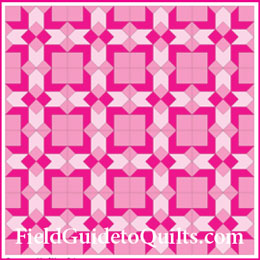 Sandhills Star Sandhills Star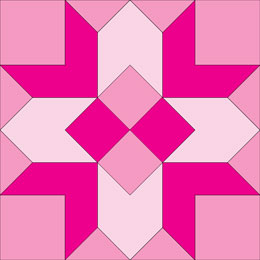 Sand Hills Star
Kansas City Star Sand Hills Star
Kansas City Star
1939
The Sandhills (or Sand Hills) is a giant patch of land that early 20th-century homesteaders found too sandy to farm but not too sandy for grazing cattle. The region makes up a quarter of Nebraska, which was home to the KCS reader who sent this block to the newspaper. |
|
Modern Star
 Modern Star
Grandma Dexter Modern Star
Grandma Dexter
ca. 1931
 Star of Many Points/David & Goliath/Doe & Darts/Four Darts Star of Many Points/David & Goliath/Doe & Darts/Four Darts
First published in a Grandma Dexter booklet (#36A) around 1931, Modern Star had a large offset square in the center and four chevron darts made from scrap prints.
We haven't seen instructions for this block on the Web. Our "Make It!" icon links to a page with our diagrams for both Modern Star and Star of Many Points, below. Lest you wonder, they're based on a 5x5 grid.
|
|
Star of Many Points
 Star of Many Points
Cabot Star of Many Points
Cabot
1936
Nancy Cabot published a variation of Modern Star in 1936 with a different color scheme and gave it many of the same names as Finley's Doe & Darts (above).
What's different? Cabot's Star of Many Points alternates two colors for every piece not in the background color. Cabot dated Star of Many Points to 1782. She didn't give any sources, but the year 1782 is nevertheless given for every Doe & Darts variation in sight.
Note: Cabot presented two blocks called Star of Many Points. We have yet to post the other. |
|
Merry Kite
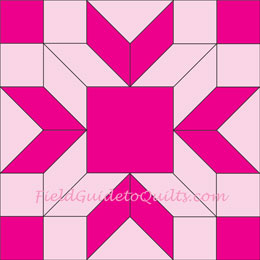 Merry Kite Merry Kite
LAC #515
1928
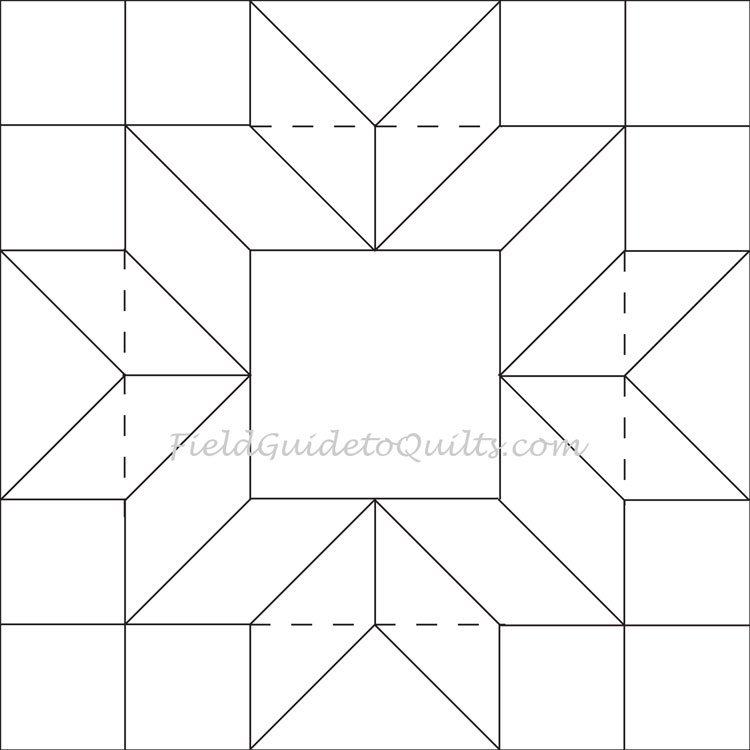 Merry Kite
Nancy Cabot Merry Kite
Nancy Cabot
1932
 Ladies Art Company block #515 was published in 1928, and our graphic shows it as it appeared in the catalog. Ladies Art Company block #515 was published in 1928, and our graphic shows it as it appeared in the catalog.
The block was republished four years later in Nancy Cabot's Chicago Tribune column. Cabot's version is much, much easier to make. See the dotted lines? They're Cabot's gift to the sanity of quilters everywhere. Cabot split half the diamonds to create a single seamline around the larger interior square.
Our diagram includes Cabot's variation too. To use the diagram, click the lavender "Make It!" icon and scroll down. For instructions on how to make Cabot's block, click on the blue "Make It!" icon.
|
|
Wedding Bouquet
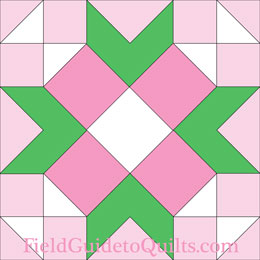 Wedding Bouquet
Nancy Page Wedding Bouquet
Nancy Page
1943
Still, Page was good at what she did, and she inspired quilters to start a Nancy Page Quilt Club. The club's not around any more, but then, neither are its members. We look forward to meeting them, but not just yet. |
|
Wyoming Valley Block
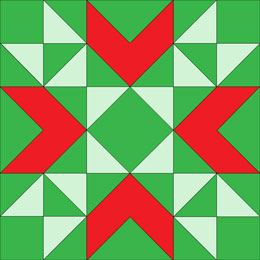 Wyoming Valley
Cabot, 1936 Wyoming Valley
Cabot, 1936
Most of the valley's able-bodied men were away, serving in the Continental Army. In the third fort, the valley's residents formed a militia of 386 old men, boys, and a few women, who, in a fatal misjudgment, left the fort to battle the invaders. Only 60 survived. Most of those who weren't killed in the 45-minute battle died after they were tortured that night.
That battle, however, was not the massacre. After the British offered generous terms of surrender, other settlers went home the next day.
The British did not remain to enforce the peace. That night, Iroquis warriors attacked the settlements, burning buildings and killing as many settlers as they could. A few escaped eastward — primarily mothers with their children — where many starved or died of exposure in a vast swampland afterward called "Shades of Death."
We've read that the block's chevrons are traditionally done in red to represent the redcoats — the British forces.
An 1809 poem called "Gertrude of the Wyoming" preserved memories of the massacre. Thanks to a congressman's fondness for that poem, a new state in the Rocky Mountains was named Wyoming in 1890.
Even so, the block was first published only in 1936. It is credited to Nancy Cabot of the Chicago Tribune. Our sources for the block are Brackman's Encyclopedia and Beyer's Quilter's Album.
*Frontier communities often built small forts that they could reach in a hurry if necessary. |
|
|
 |
|

 Sand Hills Star
Sand Hills Star























 Star of Many Points
Star of Many Points Merry Kite
Merry Kite Merry Kite
Merry Kite Ladies Art Company block #515 was published in 1928, and our graphic shows it as it appeared in the catalog.
Ladies Art Company block #515 was published in 1928, and our graphic shows it as it appeared in the catalog.























 Wedding Bouquet
Wedding Bouquet Wedding Bouquet
Wedding Bouquet






 Doe & Darts
Doe & Darts
 Modern Star
Modern Star Star of Many Points
Star of Many Points Wyoming Valley
Wyoming Valley